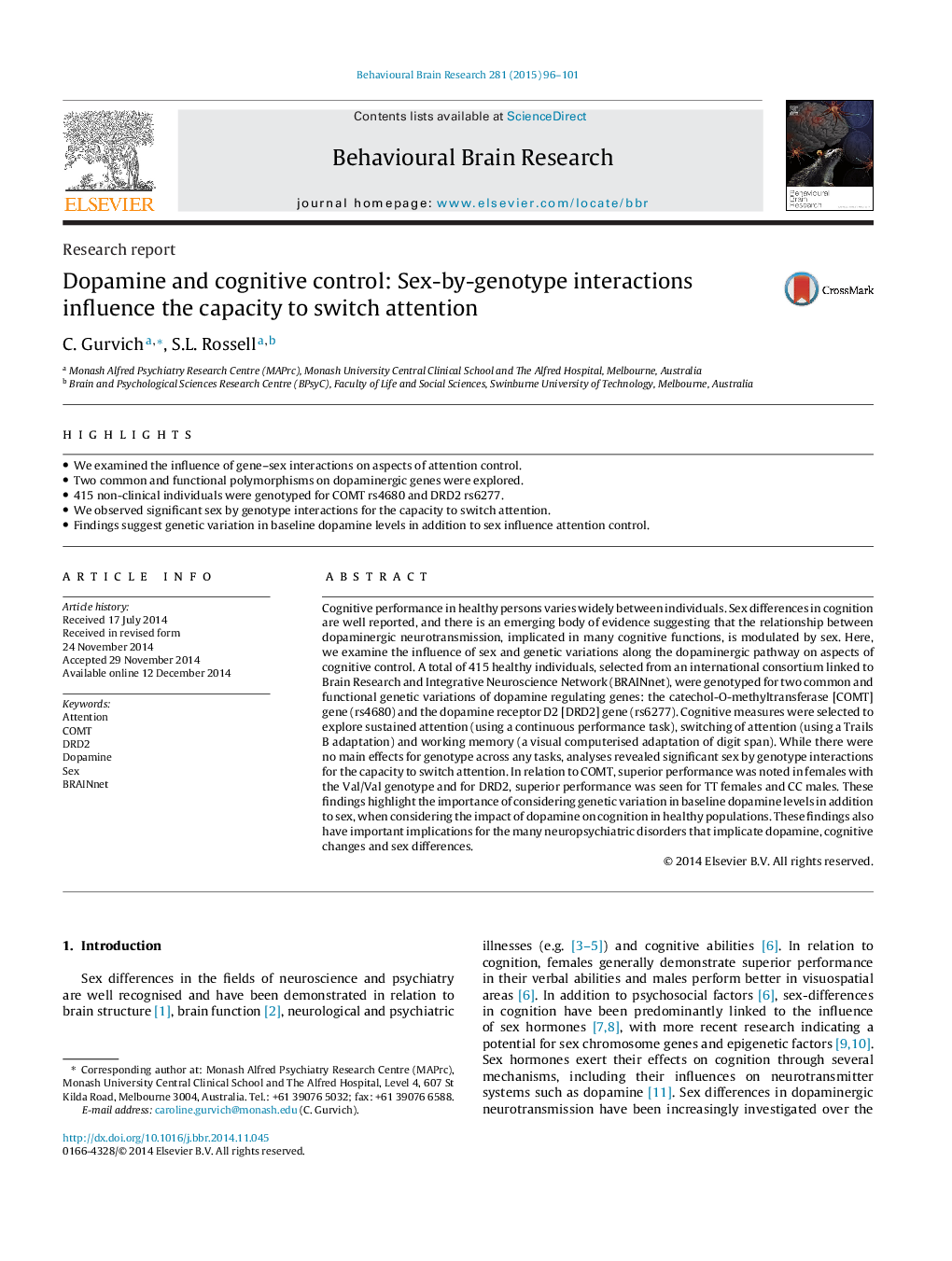| Article ID | Journal | Published Year | Pages | File Type |
|---|---|---|---|---|
| 6256972 | Behavioural Brain Research | 2015 | 6 Pages |
â¢We examined the influence of gene-sex interactions on aspects of attention control.â¢Two common and functional polymorphisms on dopaminergic genes were explored.â¢415 non-clinical individuals were genotyped for COMT rs4680 and DRD2 rs6277.â¢We observed significant sex by genotype interactions for the capacity to switch attention.â¢Findings suggest genetic variation in baseline dopamine levels in addition to sex influence attention control.
Cognitive performance in healthy persons varies widely between individuals. Sex differences in cognition are well reported, and there is an emerging body of evidence suggesting that the relationship between dopaminergic neurotransmission, implicated in many cognitive functions, is modulated by sex. Here, we examine the influence of sex and genetic variations along the dopaminergic pathway on aspects of cognitive control. A total of 415 healthy individuals, selected from an international consortium linked to Brain Research and Integrative Neuroscience Network (BRAINnet), were genotyped for two common and functional genetic variations of dopamine regulating genes: the catechol-O-methyltransferase [COMT] gene (rs4680) and the dopamine receptor D2 [DRD2] gene (rs6277). Cognitive measures were selected to explore sustained attention (using a continuous performance task), switching of attention (using a Trails B adaptation) and working memory (a visual computerised adaptation of digit span). While there were no main effects for genotype across any tasks, analyses revealed significant sex by genotype interactions for the capacity to switch attention. In relation to COMT, superior performance was noted in females with the Val/Val genotype and for DRD2, superior performance was seen for TT females and CC males. These findings highlight the importance of considering genetic variation in baseline dopamine levels in addition to sex, when considering the impact of dopamine on cognition in healthy populations. These findings also have important implications for the many neuropsychiatric disorders that implicate dopamine, cognitive changes and sex differences.
